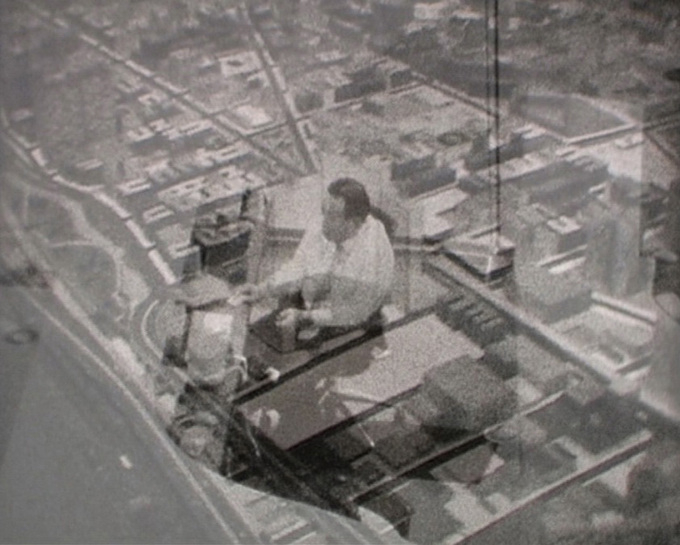Super 8 films
Movement / gesture / abstraction
Simply click the image to view each film below
Laresa Kosloff’s films witness active social events and the geometries of the built environment staged through the frame of the lens. The medium of Super 8 film allows Kosloff a direct process for recording motion that is inflected by its properties as miniature format film stock. It is Super 8’s capacity for articulating a particular pace and movement in monochrome that produces a remove from the specificity of time and place in her films. By confounding our ability to analyse the work’s temporal and spatial index, she creates a foil to unthinking apprehension. Instead, she helps us instead to encounter the actions of filming and watching, and the activity taking on place on the screen, as something of uncertain but evident value.
In her film Stock Exchange, 1998, selected for the Triennial, she presents us with a carefully framed simple panning shot of the exterior horizontal and vertical planes of the stock exchange building in Melbourne. Freed from our grounded bodies and the orienting tasks of vision, the lens facilitates the roaming of our mind and eyes in a new appraisal of all that is moving in front of us. The camera’s fluid mobility slows apprehension and our bodies are let loose from that measured perspective that grounds or elevates our vision in strict relationship with known space. Though we might surmise that the camera is in a lift, it does not disrupt the pleasure of our new mobility, nor diminish the fascination created by our ability to watch the various social exchanges taking place on screen, ‘in camera’.
In Trapeze, 2009, and St. Kilda Road, 2010, the culture of the city’s spectacle is caught and occasioned by the act of filming. Kosloff captures short clips of urban gymnasts. In these city contexts, we watch via the agency of her filming a select social unfolding. The people that move in and out of the frame appear somnambulant, as if performing their collective action in a preserve of space outside of real time. For over ten years, Kosloff has filmed these incidental sporting events, performances and spaces. Transferring the fragile celluloid images to video, she has formed a singular archive of urban social activity where collective memory and imagination is restored and made real.
Kosloff is dedicated to inducing in us a thoughtful onlooking, of how it is that we watch, in the common spaces of the public realm. As documents of the trained and untrained body in situated action, Kosloff’s films demonstrate risk-taking as a sporting, work or leisure activity and describe the body and its movement in urban space as the subject of her focus. Yet, the question remains – who is the work for? Standing in front of her films, we are made acutely aware of our watching and the stillness and separation of our viewing. Could these carefully distanced works with their studied casualness mask a future intent? Perhaps they reveal a critical yet empathetic awareness of our equally performing selves to an audience in a temporal zone other than our own.
Andy Thomson, 2010

















